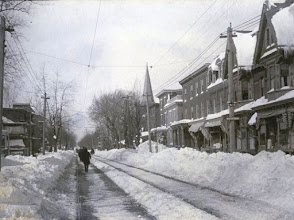Winter '17 / '18 - North Atlantic Oscillation (NAO) Analog Verification
The analog forecasting technique seeks similarities to the NAO state in the run-up to the coming winter with NAO run-up states of winters past. Presented here is the verification of NAO analogs for the '17 /'18 winter.
The NEWxSFC method ranks analog years by their the sum of square errors (SSE) statistic.
Lower SSE errors ==> stronger analog
Constraining the number of analog winters for analysis to five is arbitrary.
 |
North Atlantic Oscillation (NAO) Index Analog Forecast Verification
|
In the run-up to Winter '17 / '18 ... '90 / '91 was the leading analog followed by '94 / '95 ... '54 / '55 ... '04 / '05 ... and '02 / '03. Winter '17 / '18 NAO started strongly positive ... strengthened through the heart of the season then crashed below zero following meteorological winter's end
A qualitative assessment of the forecast's accuracy would rate the analogs #2 ... #3 ... and #4 as 'poor' ... IOW ... useless.
OTOH ... analogs #1 and #5 mimicked the observed behavior of the NAO associated with a weak La Nina. Moderate El Niño conditions prevailed during the winters of '94 / '95 and '02 / '03.
CONCLUSION: The analog forecasting technique provided useful guidance for Winter '17 / '18.
Results from a chi-square 'test for independence' infers a statistically significant relationship ... at the 95% confidence level and a p-value < 0.05 ... between NOV's NAO sign and NAO's sign of the upcoming D-J-F period.
IOW ... if NOV's NAO is negative (positive) ... then the average NAO state during the upcoming winter will also be negative (positive); although the classification model is stronger ... i.e., lower false alarm rate ... for the predictor's month with positive signs than negative. This is opposite of the relationship found for the Arctic Oscillation (AO).
BOTTOM LINE: If NOV's NAO is positive ... chances are good the NAO state will average positive during the D-J-F period.
NOV '17 NAO/s sign was zero (0) for the 1st time in the index's 68 year record. The 2x2 contingency technique offered no useful guidance.
























No comments:
Post a Comment